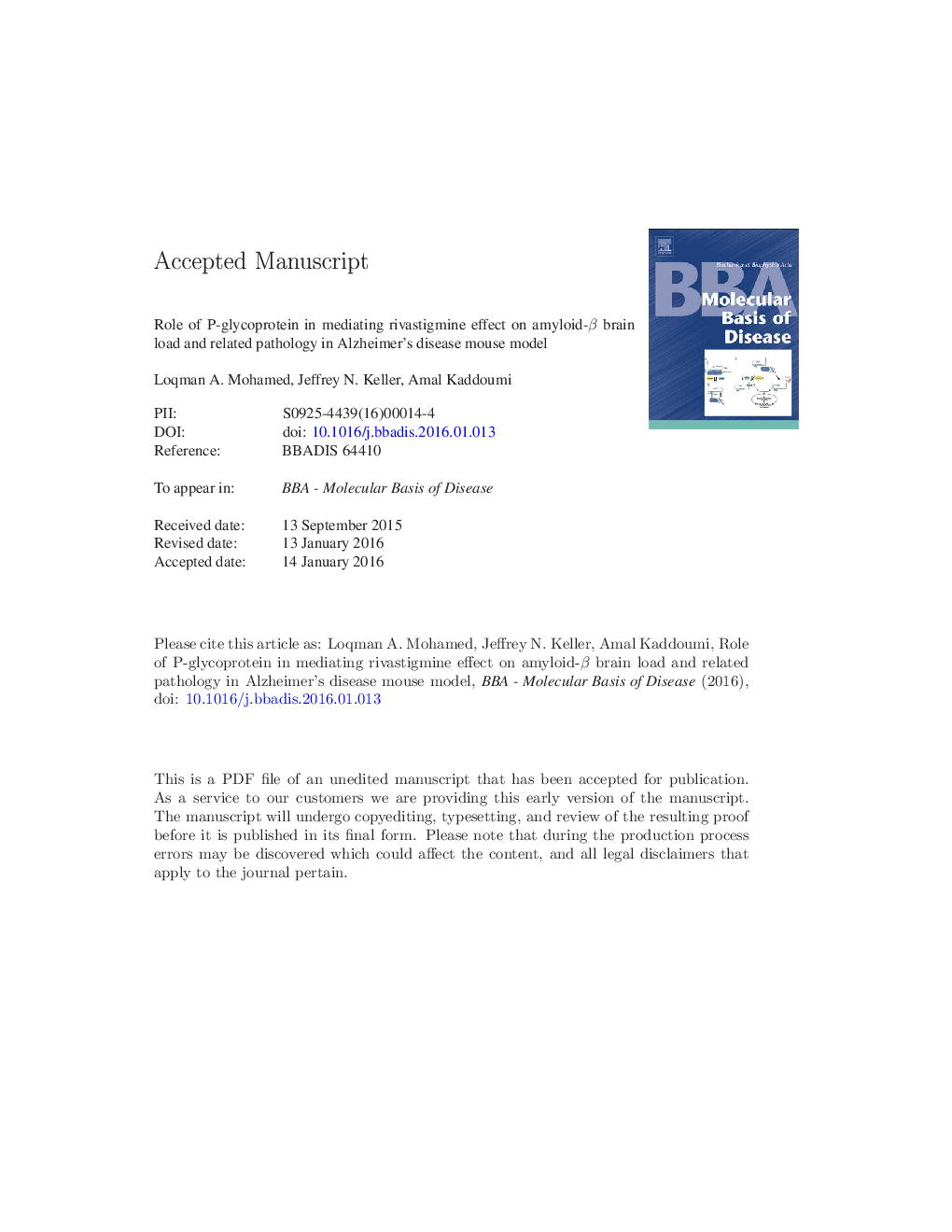| Article ID | Journal | Published Year | Pages | File Type |
|---|---|---|---|---|
| 8259530 | Biochimica et Biophysica Acta (BBA) - Molecular Basis of Disease | 2016 | 41 Pages |
Abstract
Recently, we showed that rivastigmine decreased amyloid-β (Aβ) brain load in aged rats by enhancing its clearance across the blood-brain barrier (BBB) via upregulation of P-glycoprotein (P-gp) and low-density lipoprotein receptor-related protein 1 (LRP1). Here, we extend our previous work to clarify P-gp role in mediating rivastigmine effect on Aβ brain levels and neuroprotection in a mouse model of Alzheimer's disease (AD) that expresses different levels of P-gp. APPSWE mice were bred with mdr1a/b knockout mice to produce littermates that were divided into three groups; APP+/mdr1+/+, APP+/mdr1+/â and APP+/mdr1â/â. Animals received rivastigmine treatment (0.3 mg/kg/day) or vehicle for 8 weeks using Alzet osmotic mini-pumps. ELISA analysis of brain homogenates for Aβ showed rivastigmine treatment to significantly decrease Aβ brain load in APP+/mdr1+/+ by 25% and in APP+/mdr1+/â mice by 21% compared to their vehicle treated littermates, but not in APP+/mdr1â/â mice. In addition, rivastigmine reduced GFAP immunostaining of astrocytes by 50% and IL-1β brain level by 43% in APP+/mdr1+/+ mice, however its effect was less pronounced in P-gp knockout mice. Moreover, rivastigmine demonstrated a P-gp expression dependent neuroprotective effect that was highest in APP+/mdr1+/+ > APP+/mdr1+/â>APP+/mdr1â/â as determined by expression of synaptic markers PSD-95 and SNAP-25 using Western blot analysis. Collectively, our results suggest that P-gp plays important role in mediating rivastigmine non-cholinergic beneficial effects, including Aβ brain load reduction, neuroprotective and anti-inflammatory effects in the AD mouse models.
Keywords
Related Topics
Life Sciences
Biochemistry, Genetics and Molecular Biology
Ageing
Authors
Loqman A. Mohamed, Jeffrey N. Keller, Amal Kaddoumi,
